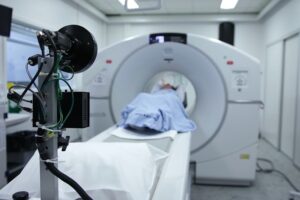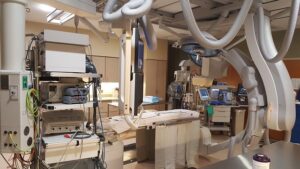ARDS Diagnosis: The Tests and Criteria Doctors Use
ARDS Diagnosis: The Tests and Criteria Doctors Use
Acute Respiratory Distress Syndrome (ARDS) is a critical condition that poses significant challenges for both patients and healthcare providers alike. It is a life-threatening condition characterized by rapid onset of respiratory failure due to inflammation and fluid accumulation in the alveoli of the lungs. Because ARDS can occur in nearly any patient with a serious illness involving the lungs, including pneumonia, sepsis, and trauma, understanding the diagnostic processes is crucial for timely intervention and management. This article aims to provide a comprehensive overview of the diagnostic tests and criteria that physicians employ when evaluating patients suspected of having ARDS, generating a better understanding for those impacted and their families.
Understanding ARDS
ARDS primarily affects the alveolar-capillary membrane, leading to increased permeability and impaired gas exchange. Patients often present with severe shortness of breath, but the challenge lies in distinguishing ARDS from other respiratory disorders that may present similarly. The term “acute” indicates that the symptoms develop rapidly, usually within hours to days. This necessitates a swift clinical response, and medical professionals must employ specific diagnostic criteria and tests to identify ARDS accurately.
The diagnosis of ARDS generally follows the Berlin Definition, established in 2012, which classifies ARDS into three categories based on the degree of hypoxemia—mild, moderate, and severe. Understanding these classifications is essential as they guide treatment protocols and hospitalization needs. The criteria focus not just on the presence of respiratory distress but also on the underlying causes and concurrent illnesses that could complicate the situation further.
- ARDS is characterized by acute onset of respiratory failure.
- Patients may have underlying conditions that complicate diagnosis.
- Early identification of ARDS improves outcomes.
Clinical Criteria for Diagnosing ARDS
The clinical criteria for diagnosing ARDS consist of the following five key components:
- Timing: Symptoms should appear within one week of a known clinical insult or worsening respiratory symptoms.
- Chest Imaging: Evidence must be present on chest imaging—which may include chest X-rays or CT scans—indicating bilateral opacities.
- Origin of Edema: The respiratory failure should not be fully explained by cardiac failure or fluid overload, as this could complicate the diagnosis.
- Oxygenation: The degree of hypoxemia is categorized into mild, moderate, or severe based on arterial blood gas levels, with specific cutoff values defining each classification.
- Underlying Conditions: Assessing the patient’s complete medical history helps identify any pre-existing conditions that may complicate the clinical picture.
The importance of these criteria cannot be understated, as they create a structured approach to diagnosing ARDS and help clinicians formulate treatment strategies more effectively. Following these steps ensures that healthcare providers do not overlook important aspects of the patient’s health status, thus improving medical outcomes.
- Patients are evaluated rapidly for recent medical events.
- X-ray imaging plays a pivotal role in identifying lung involvement.
- Heart function assessment helps rule out other causes of respiratory distress.
Diagnostic Tests
Once ARDS is suspected based on clinical symptoms and criteria, healthcare professionals will employ various diagnostic tests to confirm or rule out the diagnosis. Some of the most common tests include:
1. Chest X-Ray or CT Scan
Imaging studies are essential for identifying the presence of bilateral pulmonary opacities, which are typical features of ARDS. A chest X-ray is usually the first imaging modality used; however, a CT scan may be warranted for a more detailed view. These imaging tests help visualize any fluid accumulation and assess lung volume, which is critical in determining the severity of the condition.
- Initial chest X-rays may show fluffy infiltrates.
- A CT scan provides a more detailed view of lung pathology.
- These tests help differentiate ARDS from pneumonia or other lung pathologies.
2. Arterial Blood Gas (ABG) Analysis
ABG analysis measures the levels of oxygen and carbon dioxide in the blood, along with the body’s pH balance. These values are critical in determining the extent of respiratory failure. For patients diagnosed with mild ARDS, the PaO2/FIO2 ratio (the ratio of arterial oxygen partial pressure to fractional inspired oxygen) is greater than 200 but less than or equal to 300. For those with severe ARDS, the ratio is less than or equal to 100. Such metrics guide treatment options, especially regarding supplemental oxygen and mechanical ventilation strategies.
- PaO2/FIO2 ratios categorize ARDS severity.
- ABG analysis helps monitor respiratory improvement throughout treatment.
- Real-time data assists in deciding if mechanical ventilation is necessary.
3. Pulmonary Function Tests
Pulmonary function tests (PFTs) are more often used in chronic lung disease but can have value in ARDS evaluation. These tests measure the lungs’ capacity and how well oxygen passes into the bloodstream. They can identify restrictive pulmonary patterns typical of ARDS, helping distinguish it from obstructive diseases like asthma or COPD.
- PFTs aid in understanding how ARDS affects lung mechanics.
- Results can guide rehabilitation efforts once the acute phase subsides.
- Test results can provide prognostic insights for healthcare providers.
Exclusion of Other Conditions
One of the challenges in diagnosing ARDS is ruling out other conditions that may mimic its symptoms. Accurate diagnosis requires a thorough patient history and assessment. Often, clinicians will need to run additional tests depending on the suspected underlying cause. Simple tests include:
- CBC (Complete Blood Count): Helps identify infections or other hematological issues.
- Blood cultures: Assess for sepsis or other systemic infections.
- Electrolyte panels: Evaluate kidney function and systemic physiology.
In some cases, advanced investigations might be necessary, such as bronchoscopy or lung biopsy, to examine the lung tissue closely or obtain samples for microbiological tests. By conducting these tests, healthcare providers can clarify the underlying issues, whether they are infectious, autoimmune, or due to pre-existing medical conditions, further refining the ARDS diagnosis.
- Exclusionary tests help ensure correct diagnosis and prompt treatment.
- Invasive tests may provide relevant information about lung pathology.
- Identifying secondary causes can lead to personalized treatment plans.
FAQs About ARDS Diagnosis
As ARDS is a complex condition, questions often arise regarding symptoms, testing, and treatment. Below are frequently asked questions regarding the diagnosis of ARDS:
What are the common symptoms of ARDS?
Common symptoms include:
- Severe shortness of breath
- Rapid breathing
- Decreased oxygen saturation
- Coughing
How long does it take to diagnose ARDS?
The time to diagnosis varies, but early signs are typically recognized within hours to days following the precipitating event, given that healthcare providers follow checklists and guidelines consistently.
Are there specific populations more affected by ARDS?
Yes, individuals with pneumonia, sepsis, trauma, or those requiring mechanical ventilation may be at increased risk for developing ARDS. Particularly among older adults and those with underlying lung issues, the likelihood rises.
How is ARDS treated once diagnosed?
Treatment often includes supportive care such as mechanical ventilation, fluid management, and medications to treat underlying causes, depending on the severity and specific situation of the patient.
Conclusion
ARDS remains a life-threatening condition that challenges both patients and healthcare providers. However, through a thorough understanding of the diagnostic criteria and tests associated with ARDS, timely identification and management can be achieved. Various assessments, including imaging studies, blood gas analysis, and pulmonary function tests, play critical roles in confirming the diagnosis and excluding other possible conditions. Moreover, recognizing the symptoms early and assessing them through established clinical criteria allows for a more expedited response, improving overall patient outcomes.
As ARDS continues to gain attention in medical literature and patient care guidelines, continuous education and awareness are vital for those impacted by this complex syndrome. By sharing knowledge and supporting one another, we can navigate the challenges associated with ARDS, fostering an environment of care that prioritizes the well-being of patients and their families.
References for Further Reading
For those seeking to deepen their understanding of ARDS and its diagnosis, consider exploring the following resources:
About ARDS and Post-ARDS
ARDS (Acute Respiratory Distress Syndrome) is a life-threatening condition typically treated in an Intensive Care Unit (ICU). While ARDS itself is addressed during the ICU stay, recovery doesn’t end with discharge; patients then embark on a journey of healing from the effects of having had ARDS.
Disclaimer
The information provided in ARDS Alliance articles is for general informational and educational purposes only and is not a substitute for professional medical advice, diagnosis, or treatment. While we strive to present accurate, current information, the field of Acute Respiratory Distress Syndrome (ARDS) and related healthcare practices evolve rapidly, and ARDS Alliance makes no guarantee regarding the completeness, reliability, or suitability of the content.
Always seek the advice of qualified healthcare professionals with any questions you may have regarding a medical condition. Never disregard professional medical advice or delay seeking it because of information you read in ARDS Alliance articles. ARDS Alliance, its authors, contributors, and partners are not liable for any decision made or action taken based on the information provided in these articles.
About ARDS Alliance
Our mission is to improve the quality of life for ALL those affected by ARDS.
The ARDS Alliance is a non-profit committed to raising awareness and enhancing the understanding of Acute Respiratory Distress Syndrome (ARDS), a severe lung condition often occurring in critically ill patients. Through developing alliances, it unites various organizations and experts striving to improve care and support research aimed at finding more effective treatments. Their efforts include educating the public and healthcare providers about ARDS symptoms, risk factors, and advancements in treatment, ensuring better patient outcomes and resource availability.

“As the President of ARDS Alliance, I am dedicated to improving awareness and support for patients suffering from acute respiratory distress syndrome. Our organization works tirelessly to provide resources and education to both patients and healthcare professionals. By fostering a community of understanding and advocacy, we strive to make a positive impact on those affected by this devastating condition.”
~ Paula Blonski
President, ARDS Alliance






